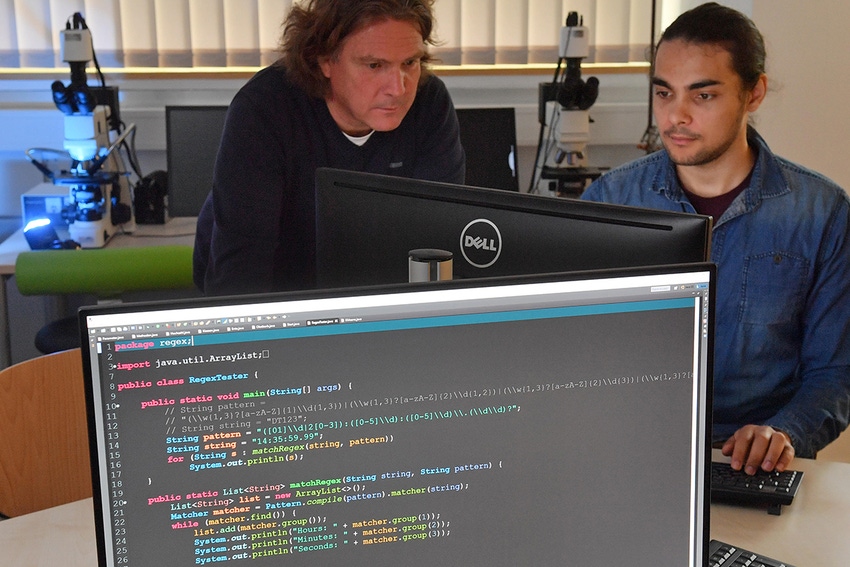
News, news analysis, and commentary on the latest trends in cybersecurity technology.
6 Ways AI Can Revolutionize Digital Forensics
Artificial intelligence tools can automate the analysis of logs, video, and other important but tedious aspects of investigations.

Digital forensics plays a crucial role in today's cyber-driven world, enabling investigators to unravel complex cybercrimes and gather evidence. With the growing volume and complexity of digital data, integration of artificial intelligence (AI) into digital forensics technology has become essential. AI algorithms and techniques offer a range of benefits, enhancing the efficiency and effectiveness of investigations and helping organizations proactively mitigate data-based security risks.
From automated log analysis and malware detection to network traffic analysis and forensic triage, AI can play a crucial role in several digital forensic activities and have a transformative impact on investigations.
Here are six ways AI can revolutionize digital forensics right now.
1. Automated Log Analysis
Security teams often deal with a massive volume of log files generated by various systems, applications, and network devices, but analyzing these logs manually can be time-consuming and error-prone. That's where automated log analysis comes in.
AI algorithms excel at processing vast quantities of log files and analyzing them for patterns and anomalies. With AI-powered log analysis, investigators can swiftly identify suspicious activities, potential security incidents, and areas requiring further investigation. AI enhances the speed and accuracy of log analysis, enabling investigators to focus their efforts on relevant areas of interest and avoid spending time and resources on manual review.
2. Malware Detection
The rapid evolution of malware calls for advanced detection methods. AI-powered malware detection systems leverage machine learning to review and scan code and study user behavior patterns, detecting malicious software more effectively and helping investigators remove malware from compromised systems to safeguard against further attacks.
For instance, security companies employ AI algorithms to continuously learn from known malware samples and their characteristics. By training these algorithms on large datasets, they can detect and classify new and previously unknown malware strains based on similarities to previously identified threats and flag a potential attack before it happens.
3. Image and Video Analysis
The analysis of digital images and videos is a critical component of digital forensics. For example, AI algorithms can sift through large volumes of multimedia content — quickly identifying faces, objects, or text within images and videos, thus significantly speeding up the process of finding and extracting crucial evidence — and support a wide range of investigation scenarios.
Consider a case where investigators need to identify a suspect captured in surveillance footage from a crowded area. Reviewing video footage is often tedious and can take hours. AI-powered facial recognition technology can rapidly scan through vast amounts of video data, pinpointing individuals of interest and significantly reducing the manual effort required. This technology expedites the identification process, enabling investigators to focus their efforts on the most relevant leads and accelerate the progress of the investigation.
4. Natural Language Processing
AI technologies like natural language processing (NLP) enable the analysis of pertinent information from large volumes of text data. For example, text-based data, including emails, chat logs, and documents, often contain valuable evidence in digital investigations. Using extractive AI can be more efficient and accurate to uncover relationships, detect patterns, and identify key individuals during text-focused investigations.
Imagine a scenario where investigators are examining a massive collection of chat logs to identify potential collaborators in a cybercrime. AI-powered NLP algorithms can rapidly process and analyze the text data, identifying recurring phrases, suspicious patterns, and connections between individuals. This enables investigators to pinpoint key persons of interest and uncover hidden networks, expediting the investigative process and enabling timely interventions.
5. Network Traffic Analysis
Monitoring and analyzing network traffic patterns is essential for detecting and responding to cyberattacks. Rather than conducting a manual audit and analyzing network traffic patterns at predetermined intervals, forensics teams can train AI algorithms to analyze network packets automatically, identify deviations from normal traffic patterns, and issue alerts when an anomaly merits further investigation. AI can also assist in correlating network events with known attack patterns, providing valuable insights for incident response teams.
6. Forensic Triage
Digital investigations involve massive volumes of data, requiring investigators to quickly sift through and prioritize relevant evidence. AI in forensic triage often involves the use of machine learning algorithms to classify and categorize large numbers of digital files based on their relevance to an investigation. These tools analyze file metadata, content, and other attributes to prioritize files for closer scrutiny, continually "learning" to identify relevant material with increasing accuracy as new data is added to the investigation. Forensics teams are able to quickly identify and focus on the most important evidence earlier, leading to faster and more effective investigations while optimizing resource allocation.
The Future of AI in Digital Forensics
The integration of AI into digital forensics technology has become an important topic of conversation among experts in the field. The potential applications of AI to forensics will continue to expand, with particular emphasis on AI's advanced capabilities in data analytics, pattern recognition, and anomaly detection.
It will also become increasingly important to determine accuracy in the age of AI, and many may consider the integration of multifactor authentication, such as fingerprint or eye authentication. However, challenges related to data privacy, bias, and accuracy must be carefully addressed to ensure the use of AI in digital forensics is always ethical and responsible.
About the Author(s)
You May Also Like
Beyond Spam Filters and Firewalls: Preventing Business Email Compromises in the Modern Enterprise
April 30, 2024Key Findings from the State of AppSec Report 2024
May 7, 2024Is AI Identifying Threats to Your Network?
May 14, 2024Where and Why Threat Intelligence Makes Sense for Your Enterprise Security Strategy
May 15, 2024Safeguarding Political Campaigns: Defending Against Mass Phishing Attacks
May 16, 2024
Black Hat USA - August 3-8 - Learn More
August 3, 2024Cybersecurity's Hottest New Technologies: What You Need To Know
March 21, 2024

